What are the main points of the laying period?
Do you know how many days of hatching an egg can produce a chicken? When does the chicken grow to start laying eggs? What is the peak period of laying eggs? do we need to care something?
A fertilized egg usually hatches the chicken after 21 days, the duck egg is 28 days, the goose egg is 30~33 days, the pigeon egg is 18 days, the pearl egg is 26 days, and the fire egg is 27~28 days. It takes these stages for a chick to go from hatching to final elimination.
Chicken raising, especially laying hens, determines the length of the egg production period. Why should limit light and limit materials before? Because, at the stage of 43~126 days, if the light is not limited, the chicken will lay eggs in advance, resulting in a shortened egg production period of 3 to 5 months, causing serious losses.
So the peak of egg production is so important, what should farmers pay attention to?
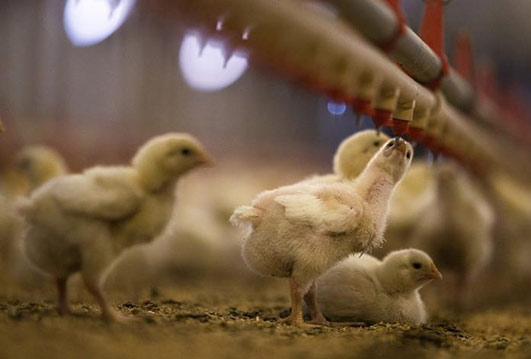
In addition to daily management, pay more attention to the condition of laying hens. Usually, in addition to packing eggs in egg packing system, clear dung, feeding, cleaning, you should also observe the status of the laying hens, see if there are sick chickens, etc. In short, pay more attention. Laying hens must ensure that nutrition is kept up.
Reduce stress and maintain environmental sanitation. High-yielding laying hens are easily frightened, resulting in less food for laying hens and lower egg production rates.
The problem to be paid attention to in raising chickens in summer: the optimum temperature for chicken adaptation is 13 to 25 degrees, and the production is customarily used for 21 to 25 degrees. In the hot summer, the chickens are fed in the cool morning.
The convenience of automatic poultry farming equipment for raising chickens
The cage breeding in the automatic poultry farming equipment is a mode of modern breeding layer hens. By using modern layer cages and other automatic poultry equipment, running a scientific and reasonable management mechanism, the production of layer hens will be of higher quality and more quantity.
- Easy to manage
Nowadays, the scale of layer farms is very large, and there are a lot of layer hens, so it is easy to manage by using chicken battery cages. Farmers can raise thousands of laying hens in chicken cages in large chicken farms. The sanitary cleaning is extremely convenient, and the daily management work is also easy to perform.
- The laying hens are in good physical condition
The method of cage breeding is convenient for farmers to treat the laying hens in time when they are sick, and the difficulty of treatment is greatly reduced. Therefore, cage breeding can ensure that the laying hens are in good physical condition.

- Convenient feeding and scientific feeding
Raising chicken in poultry cages for layer reduces the workload of farmers in raising layers and facilitates collective and efficient feeding. In addition, the scientific feeding mechanism is also easy to implement.
- Convenient egg collection and good preservation of eggs
One of the biggest advantages of poultry cages for laying hens is that the design of the cages has a certain degree of professionalism and pertinence. When a layer lays an egg, the egg will roll out of the cage along the slightly inclined bottom of the cage and enter the egg containment area of the cage for storage. Therefore, it can be collected in time and kept properly to avoid being pecked by the layer.
The above four points are the conveniences of automated poultry equipment shared by poultry equipment manufacturers in poultry farms. Farmers do not need to hire personnel to manage chicken coops, and the use of automated equipment helps farmers reduce breeding pressure.
Prevent chicken from stress response
Chickens are also avoided stress reactions occur in Poultry Equipment for Sale. There are many reasons for the stress response of laying hens. Poor management in all aspects may cause stress. Stress seriously affects the healthy growth and laying of laying hens. Affect the economic benefits of the farmers, so in the process of breeding, farmers must pay more attention to avoid the stress response of the flock
There are many reasons for the stress response of laying hens. If the nutrients are not balanced in the feeds that are usually fed, the mildew of the feed will affect the feeding and absorption functions of the broilers and then physiologically appear to have a stress response. In addition, if the temperature of the house is too high or too low, or the ventilation is unscientific, the drinking water in the external environment such as noise will also cause stress. So how do you prevent a stress reaction?
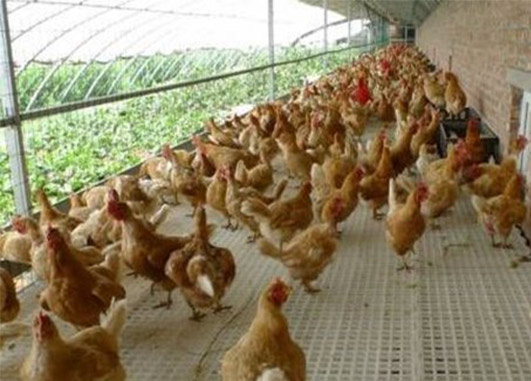
1, Firstly, from the growth characteristics of laying hens, provide a good, quiet and comfortable growing environment for the laying hens, control of temperature and humidity, and management of ventilation should be scientific and reasonable, avoiding the humidity in the chicken house caused by poor ventilation. And air pollution, etc., to avoid the stress of environmental failure.
2, to ensure the stability of feeding throughout the breeding process, such as laying water, feeding, disinfection and other environments, must be in order, time is regular, farmers must pay attention to must not be cut off, lack of material.
3, In the breeding process, it is necessary to control the environment of the chicken house, such as fixing the time of the switch light, doing the cooling work in the summer, and keeping warm in the winter to prevent the adverse effects of high and low temperature on the laying hen. In the autumn when the temperature changes greatly, timely prevention and control measures should be taken. In the rainy season, work to prevent storms is also needed.
4, In the farm where the laying hens are raised, the farmers should be careful not to yell and scream, and pay attention to the chicken houses not to be built in noisy places.
5, The feed ingredients required for different growth stages of laying hens are different. Therefore, the farmers must change the feed at a certain stage. There must be a transitional stage in the process of changing the feed, so as to ensure the smooth adaptation of the broilers.
Humidity conditions for laying chickens in laying hen cages
When using layer chicken cages to raise chickens, humidity is also an important condition for brooding, but chicken farmers generally do not pay enough attention. The humidity in the brooding house is generally expressed in relative humidity. The higher the relative humidity, the more humid the air; the lower the relative humidity, the drier the air.
After the chicks come out of the shell, they enter the brooder house. If the humidity of the air is too low, the moisture in the chicks will be exhaled through breathing, which is not conducive to the absorption of the remaining yolk in the chicks and the growth of the chicks' feathers. Once the chicks have been given a drink, the chicks often develop diarrhea due to too much water.
Appropriate humidity requirement: 60%-65% before 10 days of age, and then reduced to 55%-60%. In the early stage of brooding, due to the dry litter, the house is often hot and low humidity, which is easy to increase the water loss of the chicks, loss of appetite, frequent drinking, dry and brittle fluff, and dry toes.
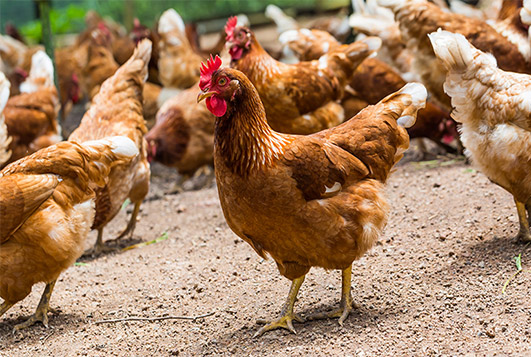
In addition, too dry can easily lead to dust, causing respiratory and digestive diseases. Therefore, this stage must pay attention to the replenishment of water in the house. You can spray water on the aisle or wall of the house to increase humidity, or place a basin or kettle on the stove to burn water to generate steam to increase the humidity in the house.
After 10 days of age, the chicks developed quickly, gained weight, and their feed intake, water intake, breathing volume, and excretion volume increased with each passing day, and the temperature in the house gradually decreased. Especially in the midsummer and rainy seasons, it is easy to have excessive humidity. The chicks are not well adapted to the humid environment. The low temperature and high humidity in the brooding house will exacerbate the adverse effects on the chicks at low temperatures. The chicks will feel colder and even tremble with cold, at this time susceptible to various respiratory diseases. When the high temperature and high humidity in the brooding house, the water evaporation and heat dissipation of the chicks are hindered, and they feel more sultry and uncomfortable, and the chicks are prone to coccidiosis and aspergillosis.
Therefore, during the period when laying hens cages are used to raise chickens, it is necessary to change the litter frequently and strengthen ventilation. When adding drinking water, prevent water from spilling onto the ground or litter.
The main points of the environmental temperature control of the battery layer hen cages
The right temperature of the chicken house can exert greater production potential for chickens. The quality of environmental control directly affects the success of breeding. Therefore, temperature control is an important factor in feeding. The following chicken breeding equipment manufacturers explain the main points of chicken house temperature control.
In the environmental control of the layer hen chicken house, the layer chicken can obtain a higher survival rate, weight gain speed and feed remuneration in the above-mentioned suitable temperature environment. Whether the specific temperature of each brooding is appropriate or not is determined by the dynamic performance of the chicks:
When the temperature is appropriate, the chicks are evenly distributed indoors, lively, with smooth feathers, and close to the body surface. They are relatively quiet during sleep and scramble to eat.

When the temperature is too low, the chicks will show low temperature performance. The chicks will be crowded near the heat source or in a certain corner, their feathers will be fluffy, the spirit will be wilted, and they will make continuous calls. This way for a long time, it is easy to cause the chicks to catch a cold or be crushed to death. It must be heated immediately and the crowded chicks must be dispersed.
When the temperature is too high, the chicks stay away from the heat source, spread their wings and lie down, panting, and rush to drink water. There is often no water in the drinking fountain, but the fluff is wet. Over time, the physique of the chicks will be weakened, growth will be hindered, and even heat death will be caused. When the temperature is too high, the temperature should be gradually lowered, but be aware that a sudden drop in temperature can cause a cold.
Therefore, attention must be paid to the temperature control of the chicken house during the entire feeding period of the laying hens. A thermometer can be placed in an appropriate place in the house for observation, and certain measures can be taken to cool down or adjust the temperature. In the hot season, when the temperature in the chicken house is high, you can open the doors, windows and vents, turn on the fan or exhaust fan, increase the ventilation in the house, and lower the temperature in the house. When necessary, cold water can be sprayed on the ground or sprayed on the roof to cool down.
The use of poultry battery layer hen cages to raise chickens requires more attention to the living environment of the chickens in the hen house. Provide a suitable temperature environment for the chickens so that they can grow healthier.
Use layer cage system to get hens to produce more eggs
Layer cage system price in Kenya has now become a modern farm essential poultry farming equipment. Because poultry facilities allow chickens to be better cared for and produce more eggs. Poultry equipment manufacturers through 6 points for everyone to share.
1.Supplement vitamin C in time during laying. In daily feeding process, farmers can choose to add 0.02% vitamin C to the diet of laying hens. According to the practice of many producers, vitamin C can increase the laying rate of laying hens by 11%.
2.Feed eggshell powder during laying. We all know that egg production and laying hens need a lot of protein. Eggshell powder in feed materials contains a lot of protein. Just what laying hens need. So farmers can crush or mash the eggshells. Add proper amount of eggshell powder into the feed of laying hens. This increases egg production by about 10%.
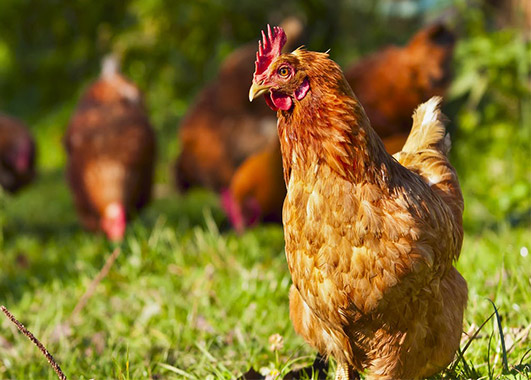
3 Feed the laying hens baking soda. Feeding baking soda to laying hens can not only improve the performance of laying hens, but also strengthen the hardness of eggshell. Adding 0.3% to 1% baking soda to the diet of laying hens can increase the productivity of laying hens.
4.Cut off the feathers of laying hens in summer. It is hot in summer. In order to reduce the heat of laying hens and increase their appetite, farmers can cut off all the feathers on the breast and abdomen of laying hens as well as the inner thighs and under the wings. This will increase their appetite and improve the performance of the layer.
5 To control the reasonable lighting. In the process of raising laying hens in battery chicken cages. Whether the light time of laying hens is uniform and sufficient will also affect the later production performance of laying hens. Lay hens are exposed to light for 8 hours a day at the time of perinatal opening. After each additional week, its light increased by half an hour. Until it reaches the peak laying period of 14-16 hours, until the end of laying, the egg production of laying hens will be significantly improved.
Break your wings when feeding chicks. Within 12-24 hours of the chick coming out of the shell, the farmer can use scissors to cut off the root of the wing. Then use a 50-watt electric iron to cauterize the bleeding, and then apply purple potion to disinfect. By doing this, laying hens can start production 10.5 days earlier and their laying rate increases 10.8 percent.
The above 6 tips are shared by poultry equipment manufacturers on how to use the layer cage system to get chickens to produce more eggs. I hope I can help poultry farmers.
How to determine the proper temperature of the house
In the process of raising chickens, the temperature of the chicken battery cages is one of the important factors that can affect the health of the entire flock. Regardless of the type of chicken, the demand for temperature is very high, and a slight inadvertent disease can occur. The temperature required for different breeding stages of the flock is also different. Chicken farmers are required to breed according to this standard, and the flock can grow better and produce higher benefits. And the majority of chicken farmers can set the temperature from the performance of the flock, what is it?
1, group performance
The proper temperature is that the chickens are evacuated and even, the body is stretched, and some chickens breathe as evidence. If they are piled away from the heat source, the respiratory rate will increase, especially if the chest breathing is increased, and the temperature is too high; if it is near When the heat source is piled up and the respiratory rate is lowered, the temperature is too low. However, the premise of this testimony is that the humidity is appropriate and the flock is healthy. If these two premises are lacking, they cannot be fully referenced.
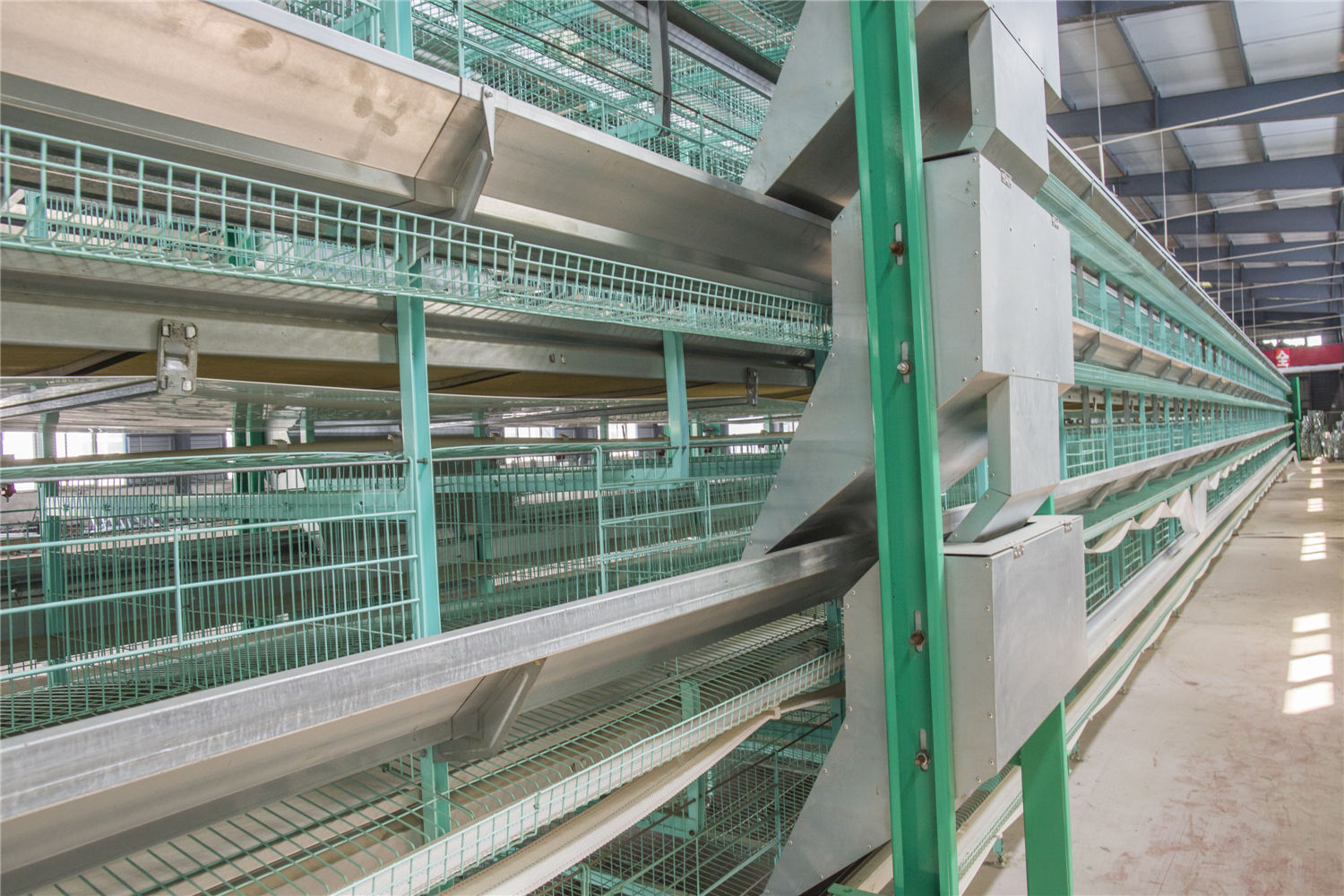
2, individual performance
If we enter the chicken cages for sale, we find that many chickens are stretched, and the neck hair is reversed, the head is tied down or the neck is lowered, and the pneumonia is caused by low humidity and high temperature. If the hand is under the wing and the abdomen is hot, then the relatively low temperature needs to be supplied. Conversely, if the hand feels cold and the legs are blue, it is necessary to provide a higher temperature.
When the temperature of the house is within the set temperature range, according to the temperature table of the chicken, normal ventilation should be carried out in the house to ensure that the air in the house is fresh. The proper temperature in the house can make the body better. Stretching, if you find that the flock is breathing too fast or too slow, there is a problem with raising the house. In addition, if the flock is low or the neck is stretched, the chicken farmers should pay attention. The temperature that is too high or too low will cause discomfort in the flock and pneumonia. In addition, the chickens can be removed and the cause of the disease can be found. The majority of the chicken farmers can judge according to the actual situation of their own breeding.
Pay attention to the feed configuration of chickens in layer cages
Battery chicken cages to raise chickens live in cages, and the source of nutrition is feed. In order to ensure that the laying hens get balanced nutrition, farmers can choose and feed according to a series of nutrients to achieve balanced nutrition in the laying hens and ensure the laying hens Good egg production performance.
- The content of salt should not be too high: Salt is a raw material and must be added in the process of preparing feed. It can increase appetite and prevent feathers and anus pecking. However, if the farmers add too much salt to the chicken feed, it will cause the laying hens to be thirsty and then need a lot of water, which will lead to excessive drinking water and frequent intense diarrhea. In addition, farmers should pay attention to the rich salt in fish meal, so farmers must control the amount of salt when adding, so as to avoid excessive salt in the feed, causing diarrhea in laying hens.
- The amount of stone powder should not be too high: stone powder is also a raw material that farmers often add when preparing feed, but it should be noted that if the amount of stone powder in the diet is too high or increase too fast, it will cause excessive blood calcium in laying hens and increase The kidneys are burdened, causing the kidneys to swell. This will eventually lead to diarrhea. When preparing the feed, the editor reminds farmers that the amount of stone powder should be gradually increased with the increase in laying rate of laying hens, and should not be added too much at once.
- Prevent mildew of raw materials: High temperature and high humidity can easily lead to mildew of feed, so moldy feed farmers should not feed them to laying hens, because moldy feed contains some toxins, which can stimulate and destroy the intestinal mucosa of laying hens. , Which in turn leads to increased intestinal mucosal permeability of laying hens, leading to diarrhea in laying hens.

Automatic poultry chicken equipment manufacturers here remind farmers to pay attention to the nutritional balance of the feed to ensure that the chickens receive adequate nutrition and grow healthier.
More...
Is the cost of raising chickens in layer cages high?
Now caged laying hens have become the first choice for farmers. But for many novice farmers who raise chickens peacefully, they have this question. Is it that the cost of raising chickens with automated chicken farming equipment is high?
The answer is that the cost of breeding will be high. The following will introduce why high-cost farmers are still willing to use it.
First of all, the chicken cage equipment adopts a multi-layer cage method. The chicken coop has three, four or more layers. Therefore, farmers using chicken cages can raise three, four times or even more laying hens. Cage raising increases the utilization of chicken house area. As the number of chicken houses increases, so does the income of farmers.

Multi-layer chicken cages raise chickens. The area above the chicken coop is also effectively used. And the feces produced by the chickens in the cage can fall on the ground or on the conveyor belt. The flocks will not come into contact with feces. This reduces the number of fecal infections. This allows the chickens to lay eggs earlier.
Laying hens are raised in chicken cages. Laying broilers live in chicken coops for a long time. The stocking density is relatively large, so there is very little space for chicken activities. If the activity of broilers is less, the energy consumption will be reduced, and the feed required will be reduced. Cage can effectively save more than 20% of feed cost.
Farmers use chicken farming equipment to raise chickens. It is very convenient to drink and feed. Farmers can save a lot of space to manage the flock and deal with other things. Improve the labor efficiency of farmers.
The quality of the chicken coop is good. Chicken farming equipment can be used for more than ten years. Farmers choose the hot-dip galvanizing process when buying. Buy duplex, anti-aging. Numerous batches of chickens can be raised.
In the chicken raising equipment, what are the layer cage equipment?
Nowadays, laying hen farming has become a popular poultry farming industry. Layer cage equipment is also becoming more and more popular with poultry farmers. So what devices are commonly used? Today, the laying hen cage manufacturer will give you a brief introduction.
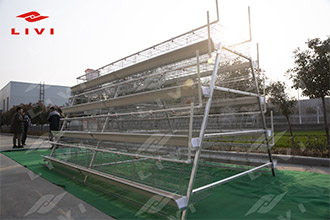
- Layer cage for sale. The use of chicken cages to raise laying hens can fully utilize the area ofthe chicken house to raise more chickens. Can increase the number of farmers breeding. And the cage covers a relatively small area. This can not only save the area of the chicken cagefor farmers, but also increase the number of farmers. When using laying hen equipment, the flock can be effectively isolated from manure. In this way, the chickens are prevented from contacting the feces and the spread of the disease is reduced.
- Automatic feeding system. The automatic feeder is specially designed for the construction of cages. The feeding machine has the advantages of strange layout, practical, time-saving and labor-saving, uniform feeding, low consumption, battery power supply, DC motor drive, low noise, convenient operation, flexible steering, small turning space, and convenient maintenance.
- Automatic manure cleaning system. The manure cleaner is widely used to remove the manure of poultry and livestock raised in poultry chicken cages in Ghana. It can realize unmanned management, automatic and timely cleaning of manure, arbitrary time setting, temporary manure removal, simple and fast operation, automatic manual conversion, convenient management and no need for many personnel. The chicken manure runs with the manure scraper to the end and falls into the manure removal belt and is sent to the manure truck to be pulled away, which can improve the environment in the house and reduce the occurrence of diseases.
- Automatic drinking water system. Water is an indispensable substance for raising chickens. From the point of view of saving water and preventing bacterial contamination, the drinking fountain is an ideal water supply building, which can realize automatic drinking water for laying broilers, and does not require farmers to manually feed water, which is highly efficient. Leaking drinking fountain.
